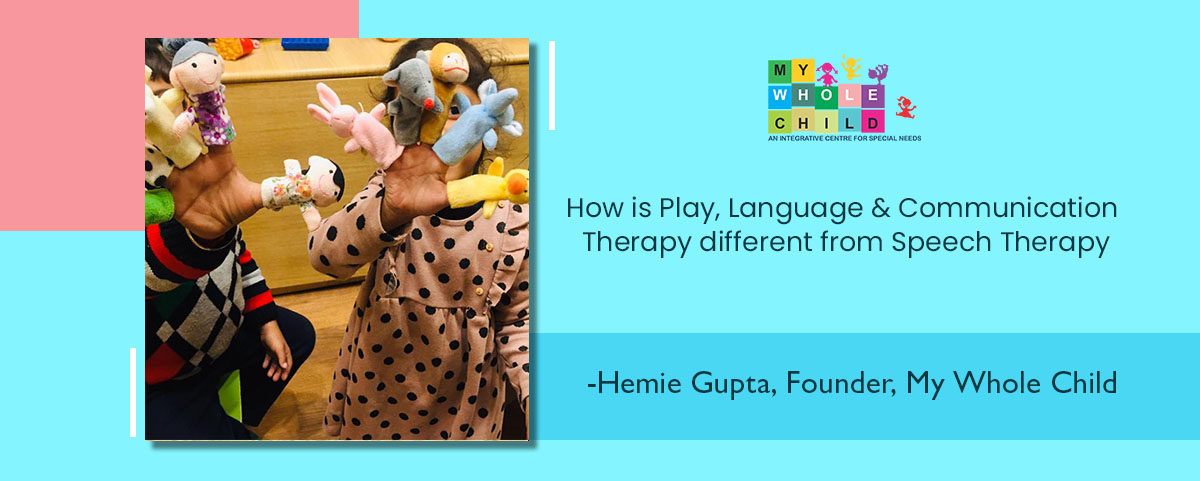What comes to mind when you hear the word “CHILD”?
Energy, active, naughty, spontaneity, creativity, fearless…
This is exactly what the focus of “Play, Language and Social Communication Therapy” is. I work on the child being an ACTIVE PLAYER and making sense of the world around.
Many parents come up asking that he has lots of language, he knows his categories like colours, numbers, fruits. He wears his shoes on his own when it’s time to go to the park and he pulls me from my hand too. So he communicates. When he wants something thats’ out of reach, he takes my hand to it. He loves watching rhymes on ipad. He knows all this, then how will a Play Language and Social Communication session help him?
I have often told the parents that it is wonderful if your child knows all these categories, but then my next question is, does he use the range of words he knows while talking to you? Does he use this vocabulary functionally? When he wants something, is the communication directed to you, or the only focus is the object or the activity of high interest. What means of communication does he use more often- verbal or nonverbal. As a social communication therapist, I will be working on refining his communication skills starting from:
- The base skills for a communication to begin are child’s Intent to Communicate and Joint Attention.
- Understanding communication in terms of directing it to a person, reaching out.
- Nonverbal communication including eye-gaze, gestures and body language.
- Verbal Communication including sounds, one word, templates, phrases, sentences etc
The major focus of the session is on Pragmatics of Language which refers to the social language skills we use in our daily interactions with others. This includes what we say, how we say it, our body language and whether it is appropriate to the given situation. Pragmatic skills are vital for communicating our personal thoughts, ideas and feelings.
Many parents come up saying that we only want our child to talk. He has ample time to play at home. He has lots of toys at home. Is it important to include play? Let’s focus on talking, since he doesn’t talk. My conversation with parents is many times about understanding WHY PLAY? Children learn to functionally use the language that they have through play. PLAY becomes the content of our conversations. The joyful experiences while playing facilitate the building of joint attention, and the emotion of joy facilitates child’s intent to communicate with the play partner very naturally.
Also then it becomes crucial to see how is the child playing? Is it meaningful play or the child keeps himself busy seeking sensory stimulation with toys, and we at times label it as playing. Are his actions repetitive with toys? Is it silent play or does he use language including sounds and words while he is playing? For example, if a child is playing with car, he migh just say— here goes my car, zoom. Oops there is so much traffic, move away, beep beep! Let me speed up. I have to reach the park fast. ZOOOOOOM!! Or is it silent play of one kind every time I take out the car?
Through these sessions, child learns to communicate and uses his language by using play as a medium. We learn to communicate through play, and then we learn to play increasing the range of toys we can play with, how I can play with one toy in multiple ways, (expanding the imagination and creativity) and a number of people I can interact and play with etc. The expansion of play is on the social and cognitive continuum of play. Spontaneity in actions while playing breaks rigidities and makes the child more flexible and confident of himself.
Most of the parents come in with the confusion of how ‘Language and Social Communication Therapy’ is different from ‘Speech Therapy’. A Speech therapist will work on polishing child’s ability to speak. But then comes the question, what will the child do with the ability to speak if he doesn’t have an intent to communicate? First the language and social communication therapist works on setting in the basic elements of social communication, that child starts seeking interactions with people around. When the intent to communicate has set in, the child will learn to speak happily in his speech therapy classes.
The speech therapist works on production of sounds, words, oro-motor needs of the child, clarity of speech and Syntax of Language. As the intent to communicate has set in, the Play, Language and Social Communication therapist is working on increasing the purposes of communication i.e. the Pragmatics of language, functional use of language, expansion of language by working on play, thinking, executive functions, emotions and theory of mind.

